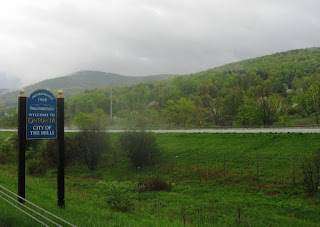Usually, when I set out to explore a new place and/or start a new chapter of my life, I tell myself: "No expectations. No desires." In fact, I've written that advice / warning / injunction on the first page of several field journals. And, more than once, repeated it on a page halfway through, as a reminder / re-order. "[Really, I mean it this time:] NO EXPECTATIONS. NO DESIRES."
With desires, you're setting yourself up for likely disappointment. With expectations, even more so. I've learned this the hard way, over and over again. "Amaze me!", I asked the Adirondacks, for example. "Heal me!", I demanded of Badlands. "Just give me any small snippet of wildness?", I begged the prairies of Kansas and the woods around Oneonta. With the first two, I slunk away, crushed. The latter two, I came to resent. When I approached Gates of the Arctic desperately needing to feel whole again, naively expecting to feel wonder again, the place barely spit me back out alive.
Places don't care what we think or wish of them. They can't save a person. They can't fail a person. All they can do is be there, with their rocks and water and wildlife and skies, for us to look at, marvel over, talk about, think about, use, abuse, remember, forget, try to survive, and project all of our feelings and fears onto. The Adirondacks, Badlands, and Oneonta are perfectly lovely locations; my disappointment in them was just that--mine. Gates of the Arctic just did what it does--roar with water, slide with snow, teeter with rocks, surprise with storms, shroud in mist, carpet with tundra, erupt in flowers, ring with mountains, mountains, mountains, mountains, all tall, sharp, too steep for their slopes. It didn't fail me; I failed it, far too small and fragile to face such a place alone.
Beyond disappointment, the real danger is that if you go to a place already wanting it to be or do something for you, it's not an honest relationship. In seeking to fulfil personal goals, you'll treat the place differently, seeking particular beauty or meaning, ignoring any features or aspects that don't fit neatly into your criteria. You might miss out on something spectacular, or you might find yourself overeager, underwhelmed, more and more convinced that the world you're in can't live up to the world you remember or dream. When I returned to Black Canyon of the Gunnison for my second season, or Petrified Forest for my sixth, more examples, I wanted only to relive and recapture past joys. Of course, this backfired, as I not only failed to make new happy memories, but tarnished several old ones in the process.
But oh, my first experience of Petrified Forest. Still, almost 20 years later, I can remember my first view out across the wild, colorful expanse of the Painted Desert and, better yet, my first tentative, then joyous steps out into it. I had had no idea such a place existed. I never could have envisioned or imagined it, asked nothing of it in those moments. Experienced it with raw wonder. Same for Tongass, and Wrangell-St. Elias. I hadn't done much research before showing up at each of those, didn't really know where I was going or what I was getting myself into, and thus approached Alaska's forested seashores and glacier-laced mountains at face value, no preconceived notions. No expectations, no desires. Sheer awe.
All of this to say, I know better.
After traveling to, working in, living in, thinking about, and hoping I'd learned something from places such as these, I [should] know better.
I've moved to south-central Utah: Bryce Canyon National Park. And I've come quite consciously and deliberately full of expectations and desires. I need to be here. I need this place, with its unlikely-eroded hoodoos, its impossibly-balanced rock spires, its arches and overhangs and bright pink cliffs blazing in the morning sun. I need this place, with its scent of ponderosas and junipers and freshly-fallen snow; its sound of wind and woodpeckers, peregrines' screams reverberating off the rock faces; its views out across mesas and canyons and mountains twenty, forty, ninety miles away. I need the skies, need the dust, need the millions of acres of surrounding public land at my fingertips and boot-heels. Millions of acres of forest and slickrock, canyons and sage, Wilderness designated and non-, I need it all.
(To amend Aldo Leopold's foreword to A Sand County Almanac : “There are some who can live without wild [places], and some who cannot."
I cannot.)
I've come to Southern Utah's canyon country with the desire to rid myself of the stress and sorrow that I've accumulated over the course of many years. I desire to swap heartbreak and loneliness for solitude or, better yet, friends. I desire natural splendor and awe and a sense of real purpose. Is that too much to ask of a place?
[Yes.]
And yet, I expect [by which I mean: I very, very much hope] that the rocks and the falcons and the thunderstorms will oblige. Already, the sunrises are something to celebrate.
























